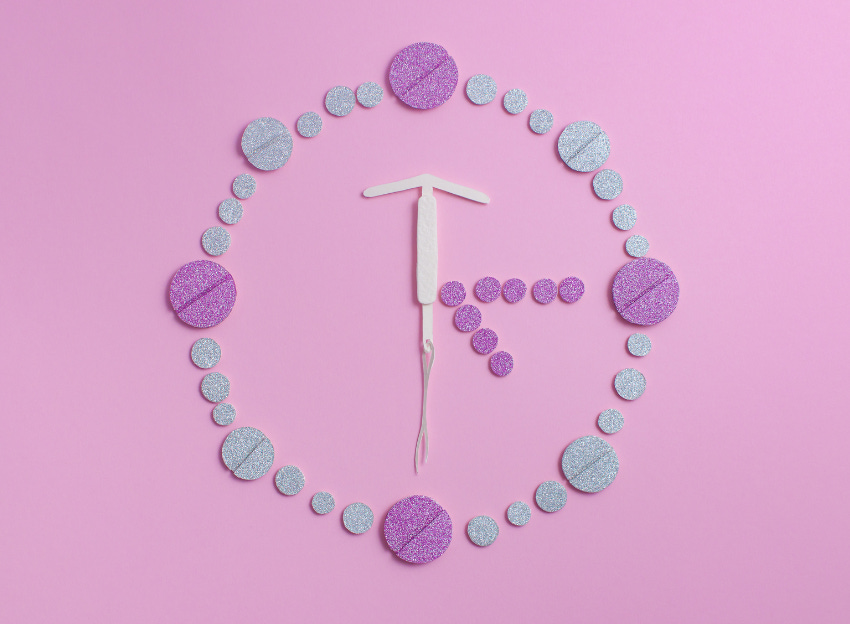Hey Team! Welcome to this special edition of Athletic Aging Medical Updates! Today, we are discussing the latest study published in the September 2025 issue of the journal Menopause, summarizing the data investigating the off-label use of the progesterone IUD for uterine protection as part of menopausal hormone therapy. Enjoy! -Dr. Carla
The use of progesterone as part of menopausal hormone therapy (MHT) regimens began in the 1970s when it became apparent that the use of estrogen alone resulted in an increased risk of endometrial cancer. In the years that followed, progestins (progesterone derivatives) became a standard part of MHT regimens in women who had an intact uterus.
Fast-forward to today, where there is a variety of options for how we can choose to use our MHT.
The FDA-approved options for progesterone/progestin use in MHT include:
Oral micronized progesterone (bioidentical): This is FDA-approved in combination with estrogen for the treatment of menopausal symptoms. Also has the most favorable safety profile for breast cancer risk. However, its use alone (ie, without estrogen) for this purpose is considered off-label, but is commonly prescribed this way as there is substantial safety and efficacy data behind it.
Synthetic progestins: Medroxyprogesterone Acetate (MPA) alone or in combination pills such as Premphase and Prempro, Norethindrone Acetate in combination tablets with estrogen such as Activella, Levonorgestrel delivered with estradiol in a transdermal patch as Climara Pro and Combipatch, and oral Drosperinone in combination with oral estradiol as Angeliq.
What has gained traction over the last decade is the use of the progesterone intrauterine device (IUD) for uterine protection. There are 4 progesterone IUDs all containing varying doses of levonorgestrel - a synthetic progestin - that are FDA-approved for contraception: Mirena, Liletta, Kyleena, and Skyla.
Although Levonorgestrel is FDA-approved for uterine protection as a transdermal patch, it is not FDA-approved for uterine protection when delivered via an IUD. However, the off-label use of the Mirena IUD for uterine protection with MHT has been practiced for many years.
In this month’s issue of the journal “Menopause” an article reviewing the data surrounding the safety and efficacy of progesterone IUDs for uterine protection with MHT was published. This is a very important piece of literature as it lends guidance for clinicians and women taking HT in decision-making about the use of the IUD beyond contraception.
Use of progestin-containing intrauterine systems in hormone therapy regimens: what are the data?
Voedisch, Amy J. MD, MS, MSCP
September 16, 2025. | DOI: 10.1097/GME.0000000000002672
Why It Matters
In combination with estrogen therapy (ET), progesterone IUDs help control bleeding and protect the endometrium, reducing the side effects associated with systemic progestins and progesterone. While this use is approved in over 100 countries, in the United States, it remains off-label, which can impact access and insurance coverage.
How It Works
The progesterone IUD releases levonorgestrel in small daily doses.
Before menopause: it thickens cervical mucus, preventing pregnancy.
After menopause: it acts locally on the endometrium, suppressing glandular growth and lowering the risk of overgrowth and malignant transformation of uterine lining cells.
Available Options in the U.S.
52 mg IUD (Mirena, Liletta):
FDA-approved for 8 years of contraception and 5 years of heavy menstrual bleeding control.
Strong evidence supports its use with MHT for up to 5 years to protect the endometrium.
Lower-dose IUD (Kyleena, Skyla):
Primarily FDA-approved for contraception.
Limited data suggest they may not provide reliable endometrial protection throughout their full duration, especially beyond the first year of use.
What the Research Says
Multiple randomized controlled trials and observational studies confirm that the 52 mg IUS prevents endometrial proliferation/pre-malignant transformation for up to 5 years when combined with estrogen therapy.
There is no robust evidence to support its safety or effectiveness for longer than 5 years. While release rates beyond this period may still offer protection, the data are sparse.
Lower-dose devices (Kyleena, Skyla) have not been adequately studied in the hormone therapy setting, and their declining hormone release makes them less reliable for endometrial protection.
Practical Takeaways
The 52 mg IUD should be the first-line choice when considering an IUD for perimenopausal and menopausal patients using estrogen therapy and needing endometrial protection.
Extended use beyond 5 years is not currently recommended for endometrial protetction, pending further research.
Lower-dose devices (Kyleena, Skyla) should be reserved for unique cases and replaced earlier if used alongside MHT
Because this use is off-label in the U.S., shared decision-making and patient counseling are essential to set realistic expectations about safety, efficacy, and insurance coverage.
NOW TAKING NEW CLIENTS!
If you are an active woman or competitive midlife athlete who feels abandoned by mainstream medicine, I’m here for you!
It is with great excitement that after more than 2 years of preparation, I have FINALLY launched my Telehealth Consultation Medical practice focusing on the Reproductive Endocrine needs and Menopausal Care for active, athletic, and high-performing women.
Active and athletic midlife women have needs and risk profiles that are different from the general population. These needs often go unmet by the mainstream medical community due to a lack of understanding of fitness and sport and their impact on mid-life hormonal physiology or even a lack of acknowledgment that this dynamic exists. We put your health, fitness, and performance at the center of the equation so that you can achieve your healthiest, highest-performing self!
You will find all my service offerings on my website including a link to my calendar so that you can reserve your place in my schedule!



